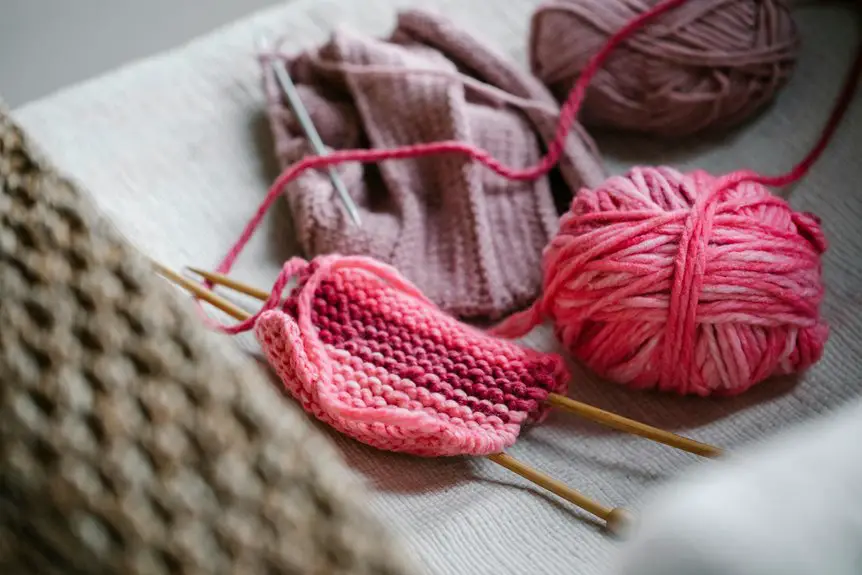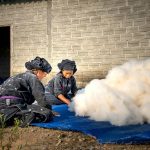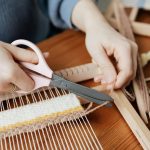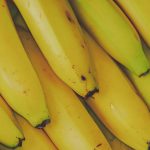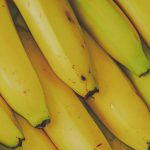To make abaca fiber, you start by harvesting mature leaves carefully with a knife, then strip the stalks to access the fibers inside. Next, you wash the fibers gently in clean water and dry them in the shade to keep their strength. After drying, you soften and clean the fibers further, then sort them by quality and length. Finally, you bundle and package them for use. Keep exploring to uncover the full process and its many applications.
Table of Contents
Key Takeaways
- Harvest fully grown abaca leaves (12-16 months old) using a sharp knife, preferably in early morning or late afternoon to minimize wilting.
- Sort and peel mature leaves (18-24 months old), removing damaged parts and stripping leaf blades for clean fiber extraction.
- Wash fibers in clean water with multiple rinses, avoiding detergents, and soak for 20-30 minutes to improve texture.
- Dry fibers in shaded, well-ventilated areas, avoiding direct sunlight, ensuring even drying to prevent mold and discoloration.
- Soften fibers by soaking in water for days, then mechanically clean, sort by quality, and bundle for packaging and distribution.
Understanding the Abaca Plant
The abaca plant, also known as Manila hemp, thrives in tropical climates and produces the strong fibers used in many products. You’ll find it growing tall, resembling banana plants, with large, broad leaves.
The strength of abaca fibers comes from its leaf stalks, which contain long, durable strands ideal for textiles, ropes, and paper. Understanding the plant’s structure helps you appreciate why it’s so valuable; its fibers resist saltwater, making them perfect for marine uses.
You’ll notice the plant prefers well-drained soil and consistent rainfall, which support healthy growth. Knowing these traits gives you a clear picture of why abaca remains an essential natural fiber source in specific regions, especially the Philippines, where it’s extensively cultivated.
Harvesting the Abaca Leaves
Once the abaca plants reach maturity, you’ll want to harvest the leaves carefully to preserve their fibers.
Begin by selecting healthy, fully grown leaves, usually around 12 to 16 months old. Use a sharp knife or sickle to cut the leaves close to the base without damaging the pseudostem.
Handle each leaf gently to avoid tearing the fibers inside. Harvesting in the early morning or late afternoon helps reduce wilting and fiber degradation.
Collect the leaves promptly and stack them neatly to maintain their quality. Avoid leaving cut leaves exposed to sunlight or rain, as this can weaken the fibers.
Sorting and Preparing the Leaves
After harvesting, you’ll need to sort the abaca leaves based on quality and size to guarantee the best fiber.
Then, clean off any dirt or debris and trim the leaves to prepare them for processing.
These steps are essential for producing strong, high-quality fiber.
Leaf Selection Criteria
Although selecting the right abaca leaves might seem straightforward, you’ll need to carefully choose only those that meet specific quality standards to guarantee strong, durable fiber.
First, pick leaves that are mature but not too old—typically those that are about 18 to 24 months old. Younger leaves tend to yield weaker fibers, while older ones may have deteriorated quality.
Look for leaves that are free from visible damage like tears, holes, or discoloration caused by pests or disease. Also, avoid leaves with excessive moisture or signs of rot, as these can compromise fiber strength.
Cleaning and Trimming
Begin by thoroughly cleaning and trimming the abaca leaves to prepare them for fiber extraction. First, rinse each leaf under clean water to remove dirt, sap, and any residual debris. This step prevents contamination during processing and helps maintain fiber quality.
Next, use a sharp knife or blade to trim off the leaf tips and any damaged or discolored sections. Removing these parts guarantees only the healthiest fibers are extracted.
Then, peel away the outer layers carefully, as these contain the usable fibers inside. Be precise to avoid wasting valuable material.
Sorting the leaves by size and quality after trimming helps streamline the next steps. Proper cleaning and trimming set the foundation for efficient fiber extraction and high-quality abaca products.
Stripping the Leaf Stalks
Now that you’ve prepared the leaf stalks, it’s time to strip them to extract the fibers.
You’ll use manual techniques, often with simple tools, to carefully remove the outer layers.
This step is essential for getting clean, usable abaca fiber.
Preparing Leaf Stalks
Once you harvest the abaca leaves, you’ll need to strip the leaf stalks to prepare them for fiber extraction.
Begin by removing any remaining leaf blades and debris from the stalks. This cleaning guarantees that only the fibrous parts remain, which makes processing easier and more efficient.
Next, sort the stalks by size and quality, setting aside any damaged or overly dry pieces that may affect fiber quality. Properly prepared stalks dry more evenly, reducing the risk of mold during storage.
Finally, trim the ends to create uniform lengths, making handling and subsequent processing smoother. Taking these steps carefully sets you up for a successful fiber extraction process, assuring your abaca fibers maintain strength and cleanliness.
Manual Stripping Techniques
There are several manual stripping techniques you can use to extract fibers from the abaca leaf stalks efficiently. You’ll typically start by peeling away the outer layers, then carefully pulling the long fibers from the inner stalk. Consistency is key, so keeping a steady rhythm will help you get cleaner fibers with less damage.
Here’s a quick overview of common manual stripping techniques:
| Technique | Description | Best For |
|---|---|---|
| Hand Peeling | Using fingers to peel off layers | Small batches |
| Finger Stripping | Pulling fibers individually | Fine quality fibers |
| Pull and Twist | Twisting stalk to loosen fibers | Tougher stalks |
| Layer Peeling | Removing layers one by one | Thick stalks |
| Steady Pull | Continuous pulling with both hands | Large volumes |
Choose what suits your fiber quality and volume needs.
Tools for Stripping
Although manual stripping techniques are effective, using the right tools can greatly speed up the process and reduce strain on your hands.
You’ll want to equip yourself with a stripping knife or a specialized fiber stripper, both designed to separate the abaca fibers cleanly from the leaf stalks. These tools have sharp, sturdy blades that help you remove the outer layers without damaging the fiber.
Some artisans also use wooden or metal combs to further clean and align the fibers after stripping. When selecting your tools, consider comfort and blade quality, since dull blades slow you down and cause fatigue.
Using proper tools not only improves efficiency but also guarantees the fibers remain intact, making the next steps in fiber processing smoother and more productive.
Scraping the Fibers From the Stalks
Before you can turn abaca stalks into usable fiber, you need to carefully scrape away the outer layers to reveal the strong, inner strands.
Use a sharp knife or a specialized scraper to gently remove the greenish outer skin and the soft pulp beneath it. Work slowly along the length of the stalk, avoiding damage to the fibers inside. By scraping in long, smooth motions, you’ll expose the fibrous core without tearing it.
Keep rotating the stalk as you progress to guarantee all sides are evenly scraped. This step is vital because the quality of the fiber depends on how cleanly you separate it from the unwanted material.
Take your time here—rushing could compromise the strength and consistency of the fibers you’ll extract.
Washing the Extracted Fibers
Once you’ve carefully scraped the fibers from the stalks, you’ll need to wash them thoroughly to remove any remaining sap, dirt, and impurities.
Start by submerging the fibers in clean water and gently agitating them. This helps loosen stubborn residues clinging to the strands. You might need to change the water several times to guarantee it stays clean during the process.
Submerge fibers in clean water and gently agitate, changing water as needed to remove stubborn residues.
Avoid using harsh detergents; plain water is usually sufficient. After soaking for about 20 to 30 minutes, rinse the fibers under running water to flush out loosened debris.
Be gentle to prevent damaging the delicate fibers. Proper washing not only cleans the fibers but also improves their texture and quality, preparing them well for the next step in the extraction process.
Drying the Fibers
Lay the washed abaca fibers out in a well-ventilated, shaded area to dry thoroughly. Direct sunlight can weaken the fibers and cause discoloration, so keeping them shaded preserves their quality.
Spread the fibers evenly on a clean surface or hang them loosely to allow air to circulate freely. Check the fibers regularly to verify they dry evenly, turning or rearranging them as needed.
Depending on humidity and temperature, drying can take from several hours up to a full day. Make certain the fibers are completely dry before moving on, as any retained moisture can promote mold growth and damage.
Softening and Cleaning the Fibers
Now that the fibers are dried, you’ll need to soften and clean them to prepare for processing.
This involves soaking techniques to loosen the fibers, followed by mechanical cleaning to remove impurities.
Finally, you’ll dry and condition the fibers to guarantee they’re ready for the next step.
Soaking Techniques Overview
Although the raw abaca fibers are sturdy, you’ll need to soak them to soften and clean away impurities effectively. Soaking loosens the fibers, making them more pliable for further processing.
Typically, you submerge the stripped abaca stalks in water for several days, allowing natural fermentation to break down unwanted materials. The water temperature and soaking duration play significant roles; warmer water speeds up softening, while too long can weaken fibers.
You can choose between freshwater soaking or saltwater soaking, depending on the desired fiber quality and local resources. During this phase, you’ll notice the fibers becoming more flexible and easier to separate.
Mechanical Fiber Cleaning
Once your abaca fibers have soaked adequately, you’ll move on to mechanical cleaning to further soften and separate them.
This step involves using specialized tools or machines that gently beat, comb, or scrape the fibers. The goal is to remove any remaining impurities like dirt, bark residues, and short fibers while loosening the strands for better texture.
You’ll want to handle the fibers carefully to avoid breakage, ensuring they stay strong and flexible. Mechanical cleaning also helps enhance the fiber’s natural luster and prepares it for subsequent processing.
Drying and Conditioning
After mechanical cleaning, you’ll need to dry and condition the abaca fibers to lock in their softness and remove any residual moisture.
Begin by spreading the fibers evenly in a well-ventilated area under indirect sunlight or a shaded drying space. This prevents damage from harsh rays while ensuring thorough drying.
Once dry, gently soften the fibers by beating or lightly brushing them to separate strands and remove remaining impurities.
Conditioning may also involve applying natural oils or mild solutions to enhance flexibility and prevent brittleness.
Make sure to handle the fibers carefully during this stage to preserve their quality.
Proper drying and conditioning prepare the abaca fibers for subsequent weaving or processing, ensuring they remain durable and soft for final use.
Sorting Fibers by Quality and Length
When you begin sorting abaca fibers, you’ll need to separate them based on quality and length to guarantee the final product meets specific standards.
First, assess each fiber for strength, color, and texture—high-quality fibers are usually longer, cleaner, and more uniform. Remove any damaged or discolored strands that could compromise durability.
Next, categorize fibers by length; longer fibers are preferred for durable textiles, while shorter ones may be used in less demanding products. Use your hands or simple tools to feel the fibers, ensuring consistent texture and flexibility.
This sorting step is essential because it directly affects the fiber’s performance and appearance in finished goods. Taking the time to carefully sort will help you maintain a reliable supply of premium abaca fiber.
Bundling and Packaging the Fibers
Gather the sorted abaca fibers carefully and start bundling them according to their length and quality. Use twine or natural fiber ropes to tie the bundles securely, guaranteeing they stay intact during transport and storage. Proper bundling prevents tangling and damage, maintaining fiber integrity. Once bundled, label each with details like grade, length, and source for easy identification. Finally, package the bundles in breathable sacks or crates to protect them from moisture and contaminants.
| Bundle Size | Fiber Length (cm) | Quality Grade |
|---|---|---|
| Small | 30-50 | A |
| Medium | 51-70 | B |
| Large | 71-100 | C |
| Extra Large | 101+ | Premium |
This system streamlines handling and guarantees fibers reach buyers in top condition.
Applications of Processed Abaca Fiber
Once the abaca fibers are carefully bundled and packaged, they’re ready to be transformed into a variety of useful products.
You’ll find processed abaca fiber used in many industries because of its strength, flexibility, and eco-friendliness.
For instance, you can use it in:
- Textile production: Abaca makes durable ropes, mats, and specialty paper.
- Home décor: Its natural texture is perfect for lampshades, rugs, and wall coverings.
- Automotive industry: Abaca fibers reinforce composite materials, making car parts lighter and stronger.
Frequently Asked Questions
What Environmental Conditions Best Support Abaca Plant Growth?
Wondering what makes abaca thrive? You’ll want warm temperatures, plenty of rainfall, and well-drained soil. Don’t forget moderate sunlight and humidity—they all combine perfectly to help your abaca plant grow strong and healthy.
How Long Does the Entire Fiber Extraction Process Take?
You’ll find that the entire fiber extraction process takes about two to three days. It depends on factors like plant maturity and weather, but with proper technique, you can efficiently extract quality abaca fibers within this timeframe.
Are There Sustainable Practices in Abaca Fiber Harvesting?
Oh sure, just chop down every abaca plant and call it sustainable! But seriously, you’ll want to harvest selectively, replant regularly, and avoid chemical overload to keep the fiber flowing without wrecking the environment.
What Machinery Is Used in Commercial Abaca Fiber Processing?
You’ll use decorticators to strip abaca fibers, washing machines to clean them, and drying machines to speed up the process. Some factories also use fiber combers and balers to prepare fibers for shipment efficiently.
How Does Abaca Fiber Compare to Other Natural Fibers?
You’ll find abaca fiber stronger and more durable than many natural fibers like cotton or jute. It’s lightweight, resistant to saltwater, and has excellent tensile strength, making it ideal for ropes, textiles, and specialty papers.
- How to Sew a Padded Fabric Ukulele Case: A Musician’s DIY Guide - June 25, 2025
- The Pros and Cons of Using a Fabric Phone Case Every Day - June 25, 2025
- Are Fabric Phone Cases Safe for Your Phone? A Drop Test Review - June 25, 2025

